
Mewing brings positive overall changes in people’s facial structure. It affects certain areas of your face, such as the mandible, and helps improve symmetry.
When mewing, your mandible will also have to develop and expand to ensure that it is accomodating the changes in the maxilla. If done from a young age, the mandible will both expand and swing up and forward to connect to the maxilla’s new position. Mewing won’t grow new bone, but it does have the ability to align your jaws.
Before we discuss how exactly your mandible expands with mewing, let’s take a look at the basic premise behind how our facial structures develop.
Craniofacial Development
The craniofacial complex that includes the face, head, and oral palate is the blueprint for the unique features of each individual. Take a look at your old photos. You will notice several changes, especially in the symmetry of your face.
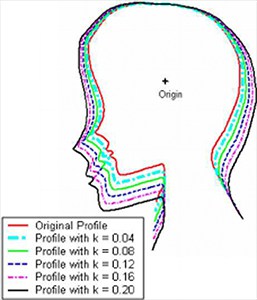
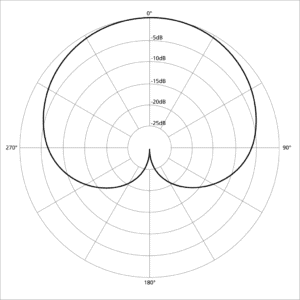
Our heads develop in a cardioid pattern. The size of our heads relative to our bodies was much larger as kids than as adults since the growth of our bodies outpaces the growth of our heads. As we grow, our face will undergo two types of development; bone remodeling and sutural growth. In its simplest terms, bone remodeling involves the usage of two cells; osteoblasts and osteoclasts.
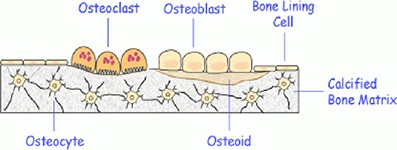
Bone remodeling is a process wherein the osteoclasts eat away the old bone and encourage osteoblasts to lay down new bone tissue. Bone remodeling consists of three steps.
- The resorption stage consists of breaking down existing bone tissue.
- The reversal stage happens when the osteoblasts appear on the surface of the bone.
- Bone formation occurs when the osteoblasts fill the surface with osteoid (an organic matrix) and eventually mineralize it.
Another type of development is sutural growth. The suture is a joint between the bones of the skull. These bones are held together by fibrous tissue. There is no better time to change bone structure than in your formative years, where sutures are like jello and very easy to manipulate.
Although many sutures will mostly solidify when a person finishes puberty, this doesn’t mean that bones can’t be changed.
The mandible grows downwards and forward throughout puberty via sutural growth. However, sutures don’t completely fuse throughout your whole life, and bones still remodel. Expanding the mandible is possible when you’re young and guiding your growth. As an adult, it might be possible, but it’s also going to be insanely slow and take years.
The Development of the Mandible
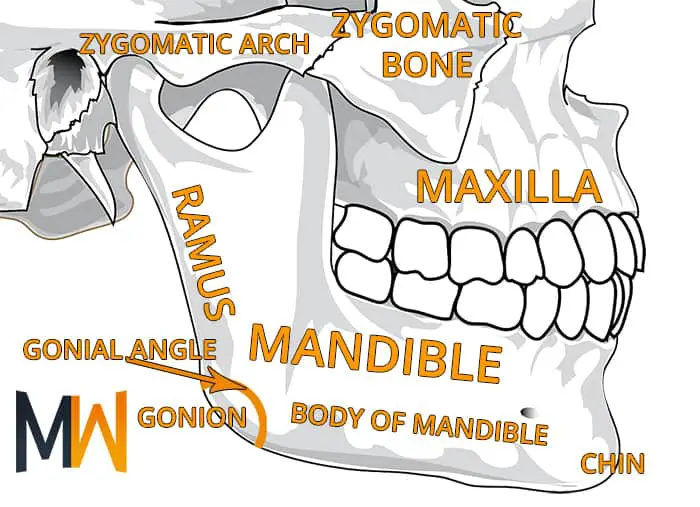
The mandible is the largest and strongest bone in the face. The mandible consists of two parts, the body and the ramus. The body is the horizontal part, while the ramus is the vertical part. The gonial angle is 170 degrees.
During birth, the mandible is like a shell. In childhood, the mandibular body becomes longer as this provides additional space for the teeth. The body also gets wider since it prepares to house the roots of the teeth.
The subdental portion thickens to ensure that the jaw can withstand the action of masticatory muscles. The gonial angle is now 140 degrees and becomes less obtuse.
During puberty, the ramus becomes more vertical in position. The subdental portion becomes as wide as the alveolar process and the gonial angle now measures from 110-120 degrees.
As we age, the mandible loses its shape. We lose teeth, and our body reabsorbs the alveolar process. The angle increases again to 140 degrees.
But the mandible continues to change in structure, even as we age. It depends not just on genetics but also the kinds of activities we engage our jaws in.]
Men have a wider jaw after puberty than women (bigonial width):
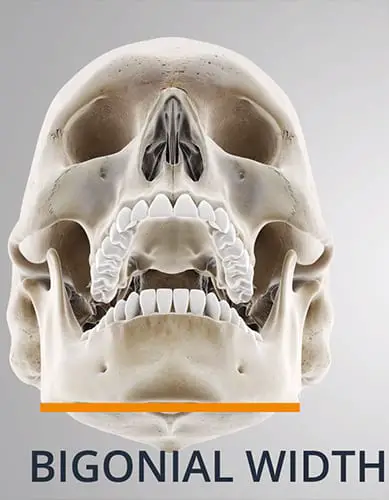
In general, you know your bigonial width is good if it’s equal to or greater than 70% of your bizygomatic width:
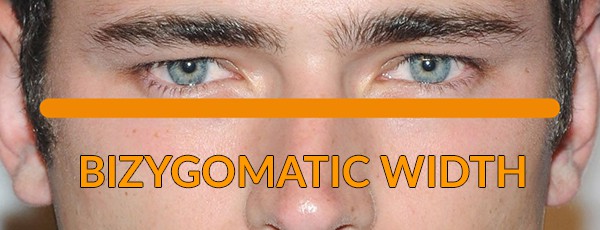
For more info on jaw aesthetics, check out this Looks Theory episode:
How Mewing Changes the Mandible
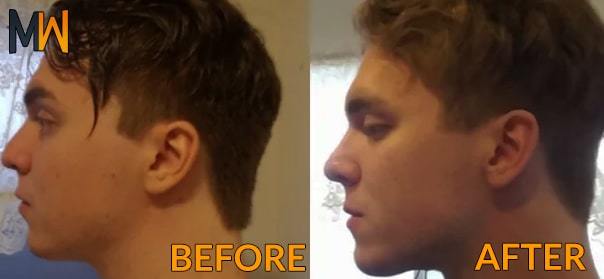
Source: Reddit
Age: 19
Time: 2 years
As mentioned, bones will undergo two types of development, bone remodeling, and sutural growth. The mewing process takes advantage of sutural growth. During puberty, the sutures in our bones are still very malleable and easily molded. This fact is why mewing gives tremendous results for individuals who start at an early age.
One good example of this is the Creed Twins. Quentin and Ben Creed both had irregular teeth.

One of them received traditional orthodontics treatment, including teeth extraction and braces. Dr. John Mew treated the other one with orthotopic treatments.
Quentin had a severe case. His tongue guided his jaw expansion, thus making more room for the teeth. This fix allowed for Quentin’s face to have more forward growth.
As the twins grew older, people were able to tell them apart because of their facial features. Due to extractions, Ben’s face becomes shorter and flattened.
Quentin’s face improved, and he looked better. Quentin’s teeth grew naturally. It has affected his jaw by making it more prominent and more natural-looking in his adult years.
Dr. John Mew states that how your tongue rests inside the mouth greatly affects your jaw structure. Your tongue should be placed at the roof of your mouth to counteract the effects of the cheek muscles.
The force of the tongue counteracts the force of the dental arch of the upper jaw in the mouth. When a child breathes through his mouth or sucks his thumb, the upper arch becomes narrow, changes the jaw structure, and leads to crooked teeth.
If the upper arch becomes more narrow, it forces the lower jaw back and down. Mewing expands the jaw and avoids teeth issues.
YouTuber AstroSky is a great example of how the mandible lined up with the rest of the face after years of mewing:
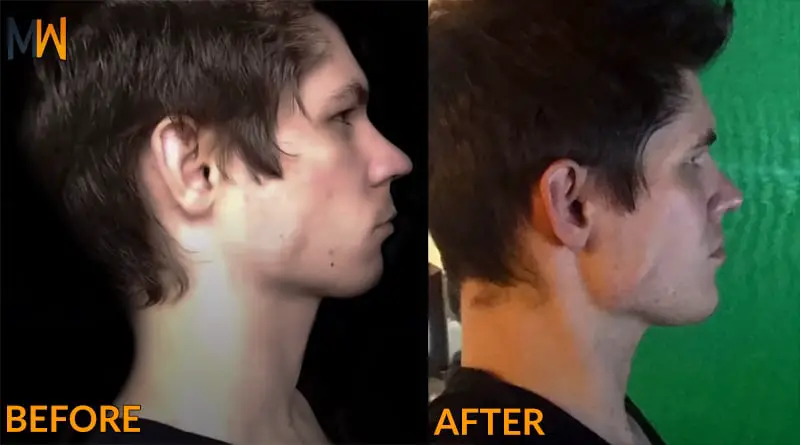
Keep in mind that his “before” picture is already after years of mewing, but he took it even further. This goes to show that while moving your mandible forward is possible, it takes a long time.

His mandible’s width is perfectly harmonious with the rest of his face after mewing. He has close to a 1:1 bigonial to bizygomatic width.
Mewing and Its Effects on the Teeth
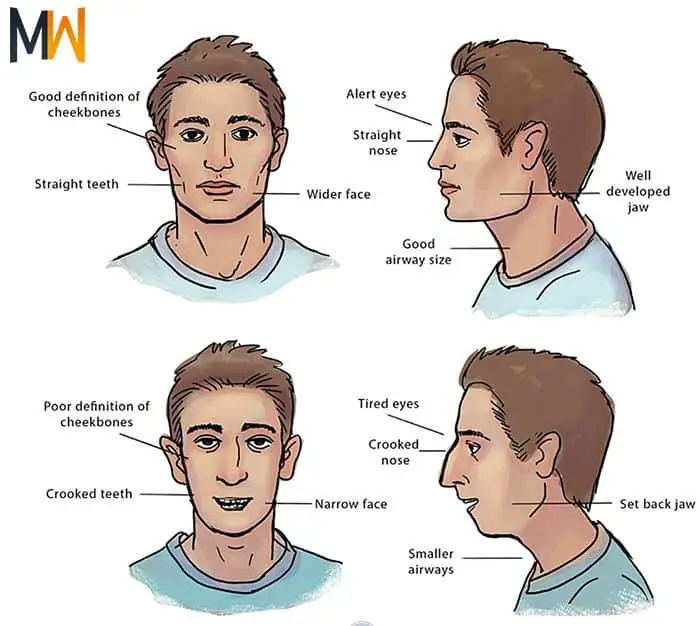
If proper tongue posture is not maintained, then it is expected that the child will have problems with how their teeth grow. Breathing through the mouth may seem like it’s not dangerous, and unfortunately, most parents will not correct their children.
However, a study conducted on mouth breathers has shown that they have a relatively backward and downward inclination of their mandible (Harari et al. 2010).
They also found out that in comparison to nose breathers, the upper and lower arches have became narrowed, thus crowding their molars and canines. Mouth breathers also have a significant posterior crossbite and abnormal mouth seal.
The childhood stage is a critical period wherein mouthbreathing needs to be corrected, as this will only result in having facial asymmetry. If you suffer from a misaligned bite, then mewing will help in fixing your upper and lower teeth.
Conclusion
Proper tongue posture training has always been recommended by orthodontists and dentists, though they usually only advise it for easing jaw pain and fixing speech disorders.
Nonetheless, proper posture will have more benefits if done correctly and for a long period. If you constantly place your tongue on the roof of your mouth, you can change the shape of your face, and over time, your mandible.
Pushing your tongue to the roof of the mouth for longer periods allows your face to swing up and thus gives you a more pronounced jawline. For more scientific evidence regarding mewing, click here.

